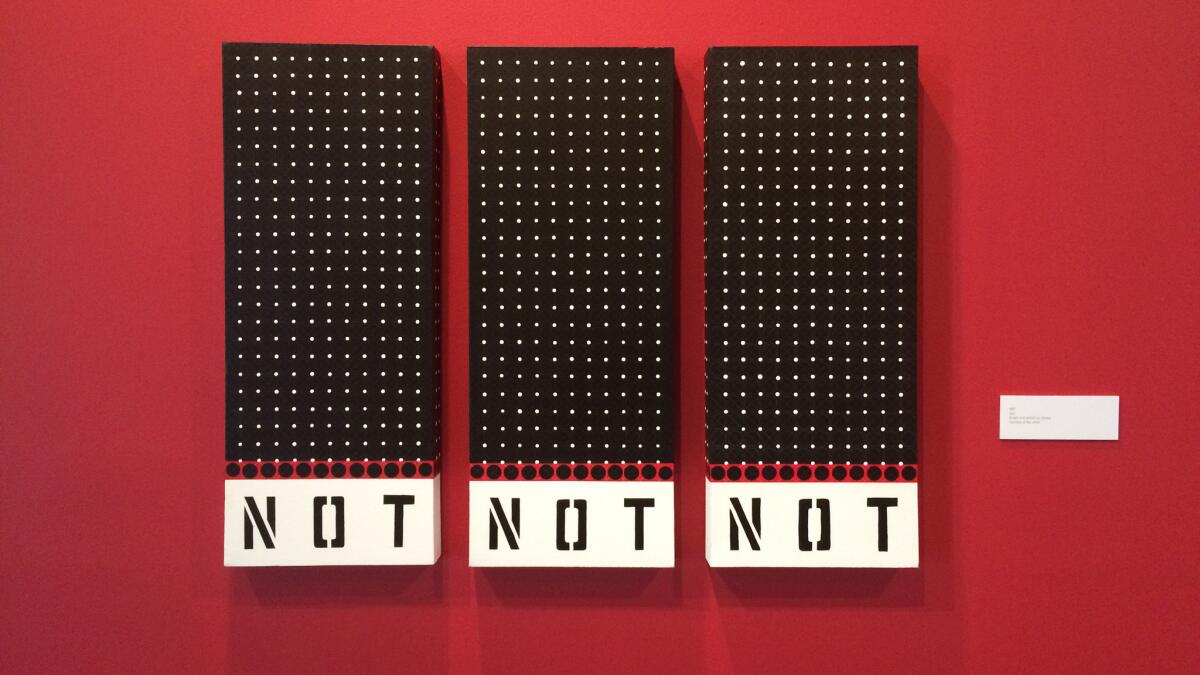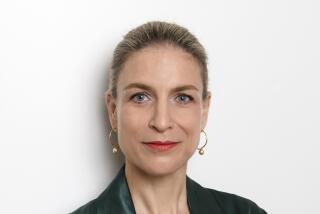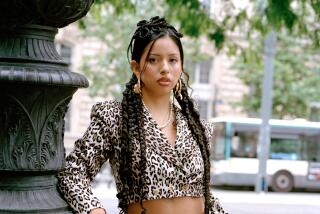Pilar Tompkins Rivas named director of the Vincent Price Art Museum — first Latina in the post
In a big move for a small institution, the Vincent Price Art Museum at East Los Angeles College has appointed curator and administrator Pilar Tompkins Rivas as its new director. Tompkins Rivas, who was previously the coordinator of curatorial initiatives at the Los Angeles County Museum of Art, becomes the first Latina to oversee the museum since its founding in 1957.
“She has incredible respect from the community and the museum world,” says board Chairman Pete Galindo. “It’s important for us to have someone who not only has a deep knowledge of the artists who have developed in East Los Angeles, but also someone who has a connection to the contemporary art world — someone who serves as a bridge.”
Tompkins Rivas, who is Mexican American, was born in Dallas and moved to Los Angeles about 15 years ago. She has lived in Boyle Heights and Monterey Park.
At LACMA, she helped establish a pair of important university-museum partnerships. She’s also served as an independent curator since 2002. Among the key exhibitions she’s helped organize is “L.A. Xicano,” a trio of shows that explored Chicano art in L.A. as part of the Getty Foundation’s debut Pacific Standard Time initiative in 2011.
“I have a lot of ideas for exhibitions,” says Tompkins Rivas, who starts at the Vincent Price Art Museum on Tuesday. “But there other things we can also do — such as building an education program that connects with the students and the staff on campus. We have to build our collections. And, of course, there is fundraising.”

The Vincent Price Art Museum was established in the mid-1950s when actor Vincent Price (who had a degree in art history) gave part of his art collection to the college — a gift he supplemented with other donations through the years. Housed in small galleries around the East L.A. College campus over the years, the museum moved in 2011 to a 40,000-square-foot building designed by the international firm Arquitectonica.
Over its lifetime, the museum has been an important space for underrepresented artists, providing key exhibitions to emerging and midcareer painters, sculptors and photographers. This has included figures such as painters Roberto Chavez and John Valadez, photographer Ricardo Valverde, muralist Judithe Hernandez and various members of the influential art collective Asco.
Currently, the museum is showing paintings by the geometric abstractionist Linda Arreola. In 2017, the museum will show the works of photographer Laura Aguilar, who is based in the San Gabriel Valley, as part of the Pacific Standard Time Los Angeles / Latin America series of exhibitions.
“This museum is embedded in an interesting nexus of dynamic communities,” says Tompkins Rivas. “You have East L.A., Montebello, Monterey Park, El Monte — the San Gabriel Valley. Los Angeles is a polycentric city, and this is one of those very important centers.”
Now that the center of the city’s cultural heart is migrating from west to east, she adds, the museum is within the orbit of the city’s most important institutions. “As the center has shifted to downtown,” she explains, “we are no longer off the art geographical radar.”
Galindo says that the museum, which had been without leadership since last summer when Director Karen Rapp left to work on independent projects, is perfectly positioned to make a real difference in the community — by showing area artists but also by bringing in artists from outside.
“That’s what inspires,” he says. “This place is a gateway to East Los Angeles. And it’s a gateway out of East Los Angeles. Pilar can really curate that.”
MORE:
What finally broke the ‘no Chicanos’ rule at the reemergent Museum of Latin American Art
Femininity in Kevlar: Nao Bustamante’s women of the Mexican Revolution
Find me on Twitter @cmonstah.
More to Read
The biggest entertainment stories
Get our big stories about Hollywood, film, television, music, arts, culture and more right in your inbox as soon as they publish.
You may occasionally receive promotional content from the Los Angeles Times.











